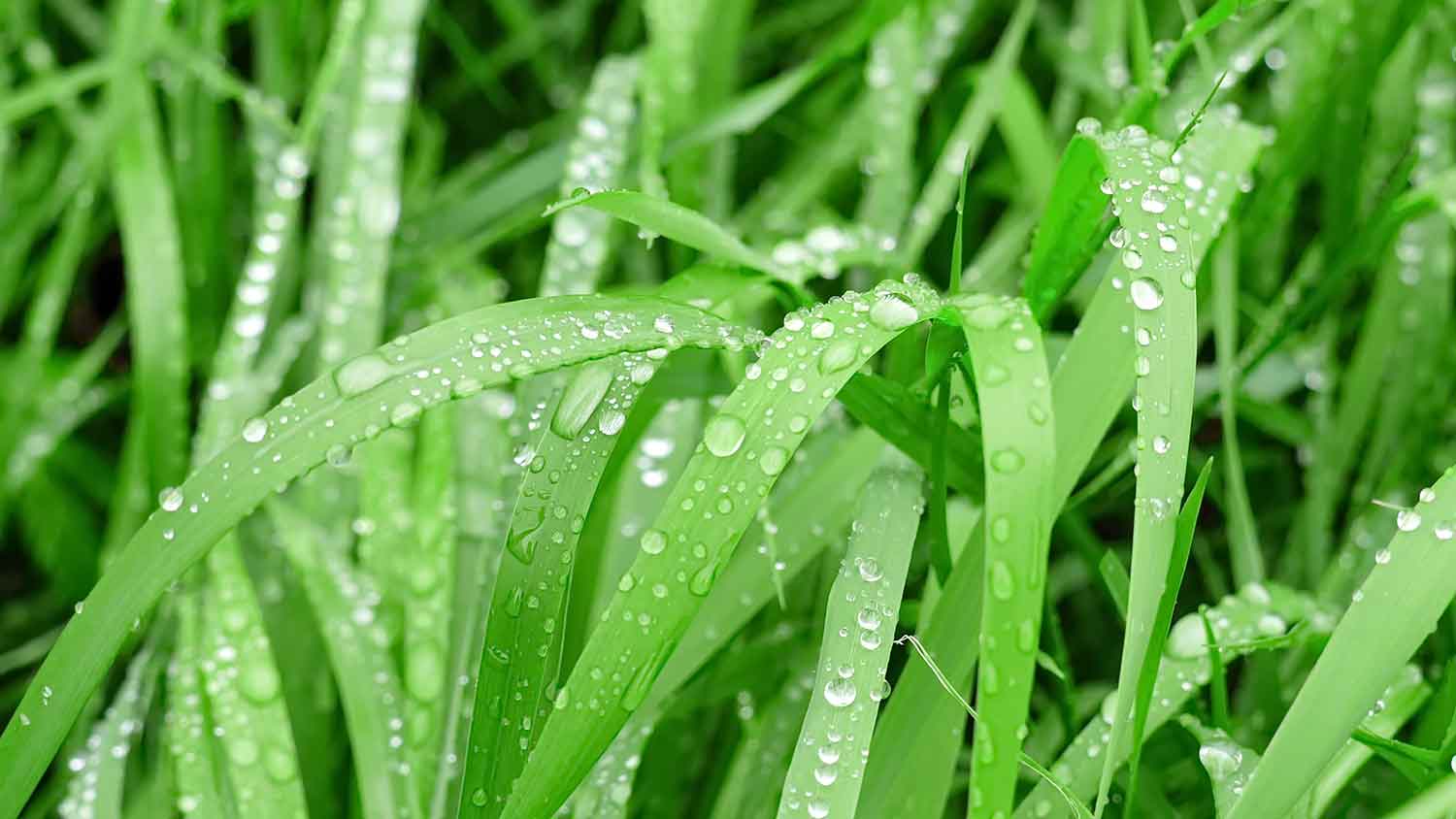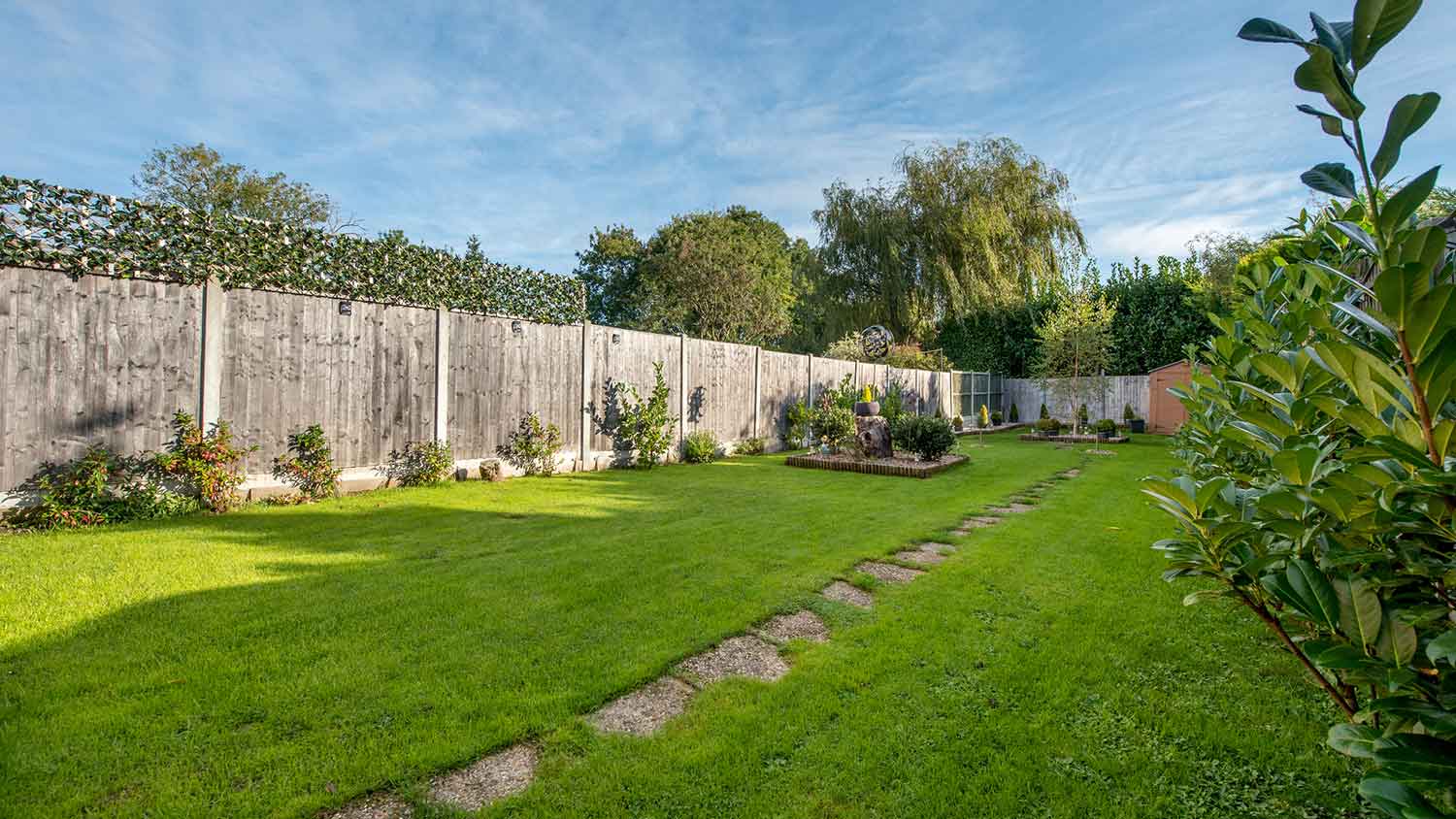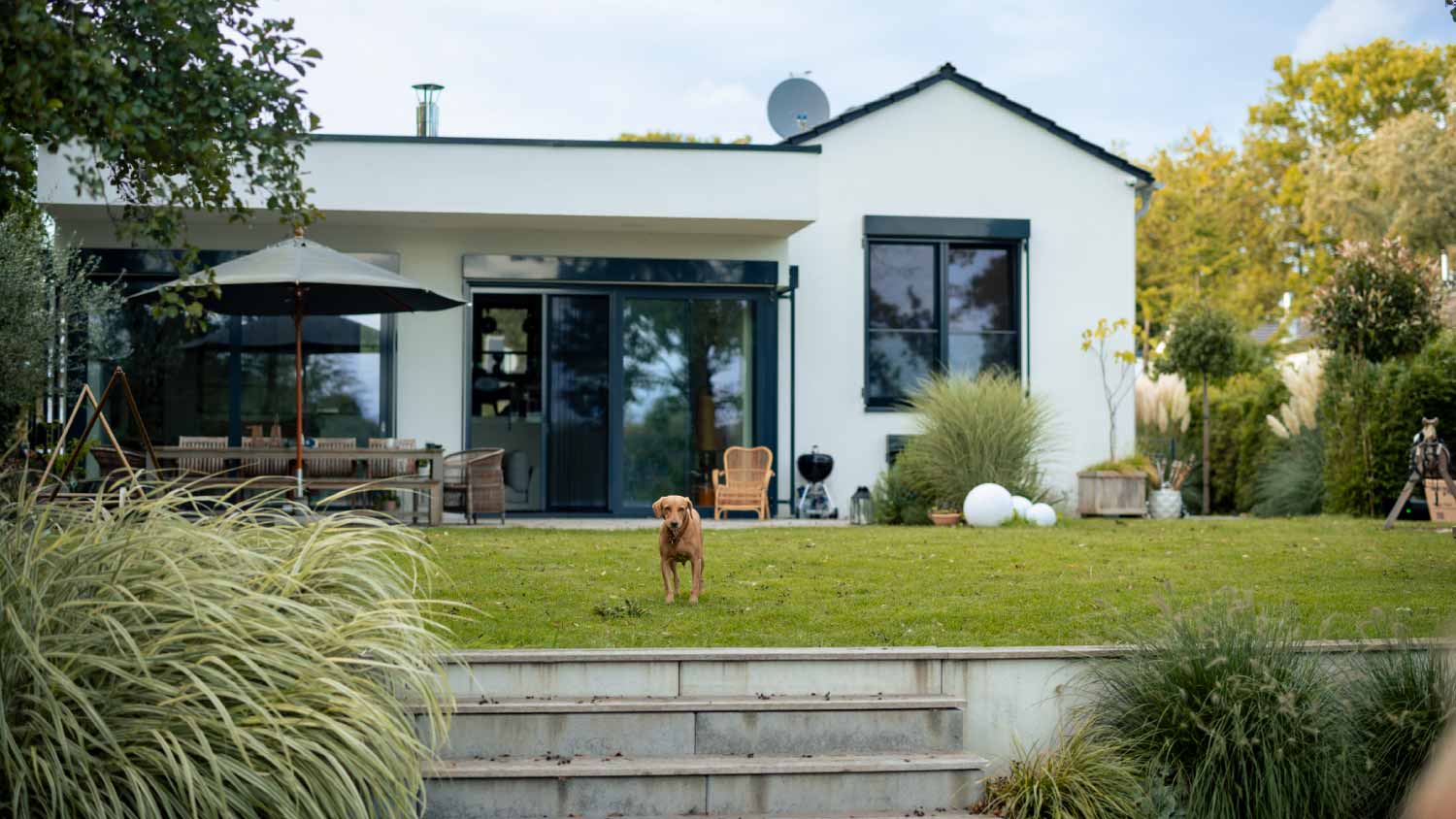
The cost to reseed a lawn can vary depending on the size of your yard and the condition of the soil. We’ll help you figure out the true cost of reseeding or overseeding your lawn, along with whether or not you should hire a professional.
Knowing when to mow is half the battle


The best time to cut grass is in the mid-morning between 8 a.m. and 10 a.m.
Avoid cutting grass when it’s wet or midday when the sun is hottest.
The worst time to cut grass is early in the morning between 5 a.m. and 8 a.m. when grass is wet from morning dew.
Many lawn maintenance enthusiasts face the same question: When is the best time to cut the grass? While there’s some debate on the significance of how you time your trimming, there are seeds of sound logic to consider. Let’s take a look at what plays into the ideal time to mow your lawn.
The best time to cut the grass is in the middle of the morning between 8 a.m. to 10 a.m. This timing allows the grass sufficient time to let go of the morning’s dew while still being able to recover in time for the intense afternoon sunshine.
If you can’t mow in the morning, the next-best time is late afternoon to early evening. Ideally between 4 p.m. and 6 p.m. It's still warm during this timeframe, but the sun isn't as strong, so there's less risk of burning your grass. Plus, it gives your lawn time to recover before it gets dark.
Check out the main factors to consider when determining the best time to cut your grass.
Periods of heavy rain or flooding are not the best time to cut grass, as the blades will be wet and vulnerable to damage from the lawnmower. Heat waves are another thing to look out for, as these can cause heat stress in plants, including grass. You should skip cutting the grass if the temperature is more than 90 degrees because the grass is already stressed from the heat and mowing can worsen the issue.
The time of year plays some part in the best time to cut grass. During the spring and early summer, when the heat isn’t as intense, you can often mow later in the afternoon without as much concern for the sun stressing and damaging the grass. When mowing in high temperatures, you may need to start cutting the grass closer to 7 a.m. or 8 a.m. rather than waiting until 10 a.m. or later.
Extreme sunlight or heat waves can potentially burn your grass, so you want to keep the blades long to protect the fresh growth closer to the soil. Likewise, overcast days (especially after rainfall) may not be the best time to cut grass. The sun helps dry out the excess moisture from grass so blades may still be wet and not ideal for mowing.
While there is a best time to mow grass based on the time of day, personal schedules are still a major factor in this task. If you have an early workday that makes it difficult to keep up your lawn mowing routine, it’s easy to fall off track. In that case, consider the option to hire a local lawn care service to ensure your grass remains in prime condition without sacrificing your work or personal schedule.

The worst time to cut grass is in the early morning between 5 a.m. to 8 a.m. This timing is potentially bothersome to your neighbors, and it can also be harmful to your grass and your lawn mower. Avoid cutting during this time because grass is wet with morning dew early in the morning, causing wet grass blades to tear and lawn mower blades to dull.
Another poor time to cut grass is after sundown. Similar to the early morning, grass often becomes dewy and wet as it gets dark. Plus, lawns are vulnerable to lawn mushrooms and other fungal infections during that time. There’s also very limited visibility, which may cause you to miss spots, run over stray objects, or even get injured. For safety reasons and to keep your lawn looking even and healthy, stick to the mid-morning or early evening hours.
The average cost to mow a lawn is $130 per visit, although prices generally vary between $50 and $210. For larger yards, costs can range from $50 to $200 per acre. Prices vary based on factors such as the size and shape of the lawn, the time it takes to mow, and the presence of obstacles that the lawn care professional needs to maneuver around.
Learning how to mow a lawn and keep a regular schedule is an approachable DIY task that can save around $130 per session. However, lawn mowing can quickly become exhausting and monotonous, and it's common to lose track of time between sessions. Consistent care is crucial for the health of your lawn, and hiring a local lawn care professional means you have one less task to worry about in maintaining the health and beauty of your lawn.
From average costs to expert advice, get all the answers you need to get your job done.

The cost to reseed a lawn can vary depending on the size of your yard and the condition of the soil. We’ll help you figure out the true cost of reseeding or overseeding your lawn, along with whether or not you should hire a professional.

The cost to renovate your lawn depends on the extent of the damage. Our guide will show you how much lawn renovation costs.

How much it costs to rent a lawn aerator depends on what kind you rent and how long you rent it for. Read on for the full details.

If your yard suffers from pooling water or erosion, here are the yard drainage questions you should be asking a contractor about fixing the situation.

No one wants to kick back on a hard and dry patch of dirt at the end of the day. Here's how to fix overly dry dirt in your lawn in seven simple steps.

Patchy or sparse lawn? It’s nothing a little seeding can’t fix. Follow these eight simple yard seeding tips for a vibrant lawn.